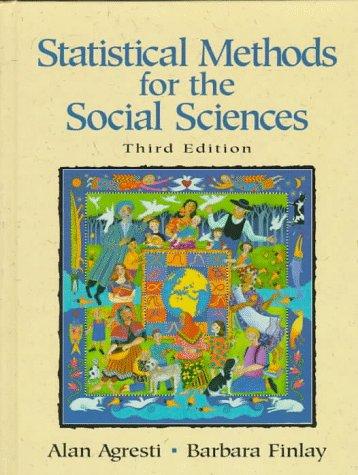7. Seegmiller et al. (J. Psychology, Vol. 102, 1979, pp. 215-224) studied the effect of tester sex...
Question:
7. Seegmiller et al. (J. Psychology, Vol. 102, 1979, pp. 215-224) studied the effect of tester sex on sex-role differentiation scores of a sample of preschool children. For the Occupa- tional Preference Test, children were asked to give three choices of what they wanted to be when they grew up. Each occupation was rated on a scale from 1 (traditionally feminine) to 5 (traditionally masculine), and a child's score was the mean of the three selections.
a) The mean score was 4.7 for the 152 boys (s = .7), and the mean score was 3.1 for the 140 girls (s = 1.3). Construct a 95% confidence interval to summarize how much more masculine the boys' choices tended to be than the girls' choices. Interpret
b) When the tester was male, the 50 girls had P=2.9 and s = 14. whereas when the tester was female, the 90 girls had 32 and s = 1.2. Test the hypothesis that the true mean is the same for each tester sex, against the alternative that they differ. Report the P-value and interpret
c) For the test in (b), what is your conclusion, using a = .05? If you have made an error. is it a Type I error or a Type II error?
Step by Step Answer:

Statistical Methods For The Social Sciences
ISBN: 9780135265260
3rd Edition
Authors: Alan Agresti, Barbara Finlay





